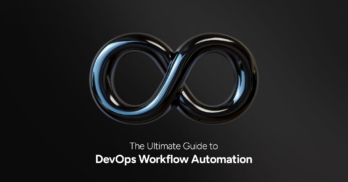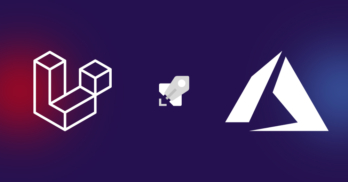Greetings! I'm Aneesh Sreedharan, CEO of 2Hats Logic Solutions. At 2Hats Logic Solutions, we are dedicated to providing technical expertise and resolving your concerns in the world of technology. Our blog page serves as a resource where we share insights and experiences, offering valuable perspectives on your queries.
Having an online store that runs smoothly and efficiently is essential, right? This can be achieved through Continuous Integration (CI) and Continuous Deployment (CD). CI involves regularly integrating code changes into a shared repository, while CD automates the release of this code to production. Though often discussed in technical terms, the benefits of CI/CD go far beyond the development team, positively impacting your entire business. Maximize the potential of CI, CD, and other DevOps practices by exploring our DevOps Consultancy. This blog post will dive into how Continuous Integration works and its advantages.
Understanding Continuous Integration in DevOps
Continuous Integration is a DevOps practice wherein developers continuously integrate code changes to a shared repository. Continuous building, testing, and integration are done through automation to form a continuous process called a CI pipeline. The aim is to increase the speed and quality of software delivery by bringing the issue-fixing stage into the early phase of software development.
What does Continuous Integration Do?
CI encourages developers to integrate their code frequently, possibly several times daily, into a common repository. Every integration would be automatically tested to find errors as early as possible. Since the amount of change is relatively small and done in shorter intervals, locating and fixing bugs will be easier and less time-consuming. This results in higher reliability and stability of the codebase.
How Continuous Integration Can Be Used?
Continuous Integration is a best practice in modern software development, with errors being detected early rather than at the end of a project. The following are some pre-conditions for successfully implementing CI:
- Automatic build helps to simplify compilation.
- Automated testing results in quick error detection.
- There should be a centralized code repository, which would make collaboration easier.
- The development process is visible under one view for all the team members.
- Contributors have real-time access to the code.
Teams new to CI should start small, incorporating CI/CD pipelines in their workflow and grow with it.
CI Tools
1. Bitbucket Pipelines
Bitbucket Pipelines is well-integrated with Bitbucket for Continuous Integration and provides code-managed, automated builds. It also facilitates Continuous Delivery to deploy software in production infrastructure.
Website–https://bitbucket.org/product/features/pipelines
2. Jenkins
Bitbucket Pipelines is well-integrated with Bitbucket for Continuous Integration and provides code-managed, automated builds. It also facilitates Continuous Delivery to deploy software in production infrastructure.
Website–https://bitbucket.org/product/features/pipelines
3. GitLab CI
GitLab CI offers a complete DevOps experience with modern UX and container support, streamlining the development lifecycle.
Website–https://about.gitlab.com
Importance Of CI
Continuous Integration (CI), is a base practice in DevOps. Through Continuous Integration, code changes by individual developers are automatically integrated with the shared repository of code. This keeps the codebase stable and consistent. Conflicts are avoided this way, and debugging becomes much easier as the issues can be found early in the development lifecycle.
Benefits of CI
- Faster development cycles: CI automates the integration process, hence the time required to merge code changes and identify conflicts. Thereby, teams can deliver new features and bug fixes faster.
- Improved code quality: CI continuously integrates the code changes and runs automated tests, early bug catches and fixes become much easier in the development process, yielding high-quality software.
- Reduced risk of integration errors: CI prevents the integration problems that may arise from various developers working in isolation and then trying to merge their code changes at the end of the development cycle.
- Enhanced collaboration: CI allows collaboration amongst development teams by integrating a shared platform for code and testing.
- Simplified deployment: Integrating CI with continuous delivery practices automates the release of code changes to a production environment. This makes the release process more efficient and reliable.
- Improved visibility: The practice of CI brings visibility into the development process allowing teams to track progress, recognize bottlenecks, and make data-driven decisions.
Overall, CI is a critical component of DevOps that enables teams to deliver software faster, with higher quality, and with greater efficiency.
How does a CI pipeline work?
A CI pipeline automates the first three stages of the software development lifecycle: build, test, and release. Adding automation to these stages quickens them, allowing one to deploy reliable software faster. Of course, it would be possible to do these things manually, but that’s missing the point.
Stages of a CI pipeline
1. Build
At this stage, the application is built. This is normally an automated trigger on committing code changes by the developer to the repository. Note that popular build tools can be leveraged for compiling the application in a clean, isolated environment—containers are typically used for creating lightweight build environments.
2. Test
Automated testing is executed after the build to find bugs and critical problems. The unit tests can be executed at this stage as they offer a good balance between simplicity and cost efficiency.
3. Package
The code is packaged after testing. Steps for packaging are automated based on the used programming language and production environment. A team working with JavaScript combined with Docker, for example, may use npm with Docker images to complete this stage.
Conclusion
Understanding Continuous Integration is just a step toward optimizing your online store’s reliability and efficiency. Integrate the practice of CI, and you are guaranteed smoother updates with minimal or no disruptions, affecting your customers’ shopping experience. Feel free to contact us today to find out how we can drive your e-commerce operations forward.
Stay tuned for our next blog, where we’ll delve into the specific benefits of CD for your business.

Related Articles







